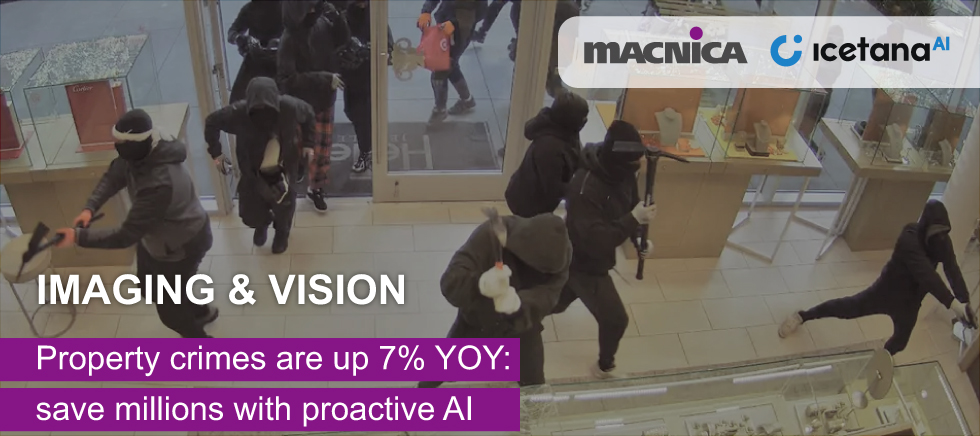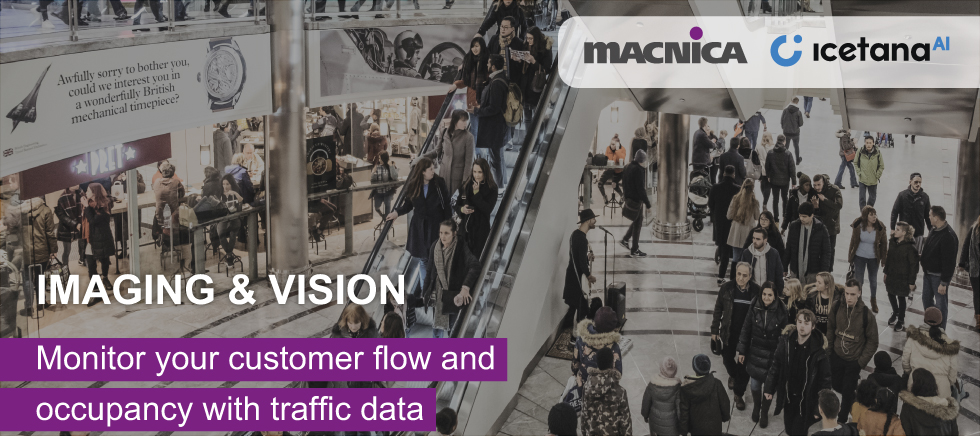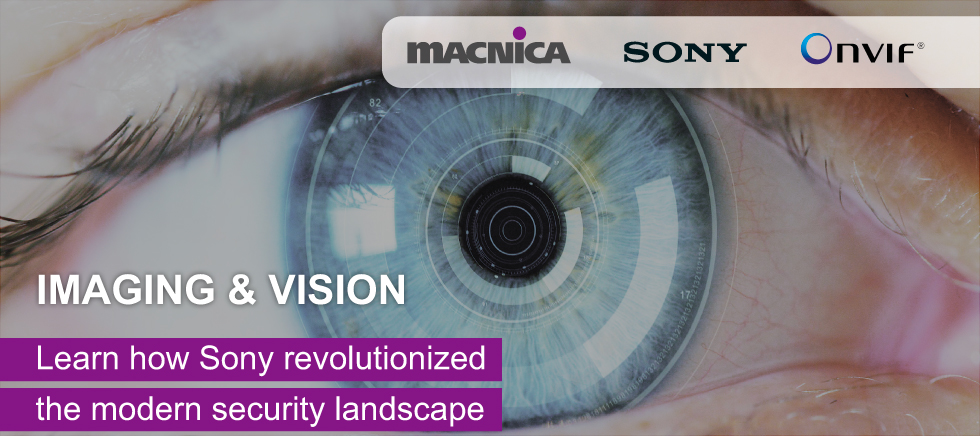Macnica and icetana AI-Driven Surveillance Helps Mall Security Reduce Crime, Cut Costs and Build Trust
Image: San Ramon Police Department
Mall security isn’t just about deterring crime: it’s about protecting reputation, retaining tenants and enabling shoppers to trust a safe shopping experience. Today’s property managers and security professionals face a troubling resurgence of retail and infrastructure crimes that threaten revenues and public perception. From smash-and-grab thefts to parking garage assaults to rooftop copper heists, these incidents are becoming all too common and costly.
According to the National Retail Federation, the costs associated with organized retail crime exceeded $112 billion in 2022, while FBI data shows property crime overall increased 7% year-over-year. For example, in California, a well-coordinated team recently stole more than $1 million in jewelry from a San Ramon boutique, distracting staff while others cleared display cases. The entire incident unfolded in minutes, a textbook example of why reactive surveillance fails.
Incidents like this leave behind far-reaching consequences: shaken confidence, rising insurance costs and disrupted operations.
The Rising Risk Landscape for Malls
Theft and property damage have taken on new forms. Smash-and-grab robberies - where groups of thieves break into storefronts, grab high-value items, and flee within minutes - are occurring in malls and shopping centers nationwide. Parking garages, once an afterthought in security planning, have become hotspots for car thefts, bike thefts, and violent assaults.
Then there’s copper theft, a quieter but equally destructive crime. Copper thieves can cause hundreds of thousands of dollars in damages by stripping copper from rooftop HVAC units, leaving property owners with extensive repair costs and days of business disruption.
In June 2025, two men were discovered hiding inside an HVAC unit on the roof of an Indian River County mall after attempting to strip copper piping. The incident caused thousands of dollars in damage before security was able to respond.
These incidents share a common thread: they exploit visibility gaps and delayed response times. By the time a security team reviews surveillance video footage, the damage is done and the thieves are gone.
The Hidden Costs of Crime: Beyond Property Loss
For property owners, the financial impact of theft is only the beginning. When a shopping center develops a reputation for unsafe conditions, tenants and customers take notice.
Even a handful of incidents can erode a mall’s reputation, reducing foot traffic and leasing opportunities. Retailers may seek relocation or demand costly concessions to offset perceived risk.
Insurance premiums also rise. In some U.S. cities, commercial policies for high-traffic retail properties have risen dramatically as insurers weigh crime rates and response times into their pricing models.

Why Traditional Surveillance Falls Short
Most commercial properties already have extensive camera coverage - often hundreds of cameras across a single complex. The issue isn’t lack of footage; it’s lack of monitoring.
Traditional surveillance systems rely on human operators to watch dozens of feeds simultaneously. When incidents occur in a parking garage or on a remote rooftop, for example, operators often notice only after an alarm triggers or a person reports suspicious activity.
In effect, traditional systems are reactive and designed to record evidence after the fact rather than prevent the event from escalating. The growing size and complexity of mall environments make this approach increasingly ineffective.
icetana AI-Enabled Surveillance Transforms the Landscape
Macnica Americas, in collaboration with icetana AI, is promoting a self-learning video surveillance system that can monitor hundreds of cameras simultaneously and alert operators only when something truly unusual occurs.
Rather than relying on motion detection or static rules, icetana’s AI “learns” the normal behavior patterns of each camera view - people walking, cars parking, maintenance crews on the roof - and identifies anomalies that could indicate a potential threat. For example, an icetana AI system could prevent copper theft by detecting unexpected movements late at night near an HVAC unit. The system would recognize the behavior as abnormal and send a real-time alert.
It could also prevent something like the San Ramon boutique heist by recognizing erratic group behavior or sudden crowd convergence anomalies as they develop and alert operators before losses escalate. Instead of sifting through hours of video or waiting for a report, the operator receives an immediate notification with footage of the event as it unfolds. This self-learning approach turns passive surveillance into proactive protection. Security teams can focus on genuine threats, shorten response times, and dramatically reduce false alarms.
Real-World Outcomes and ROI
AI-enabled video systems improve security while optimizing resources and reducing costs. A single operator using icetana’s platform can effectively oversee up to 500 cameras, with the AI surfacing only the most relevant events. This allows mall operators to scale security coverage without adding staff.
In addition, by capturing and flagging incidents in real time, operators can coordinate with onsite security personnel or local authorities before damage escalates. In the case of copper theft, an early alert from rooftop motion anomalies could prevent thousands of dollars of losses.
For retailers, the benefits are tangible. Fewer thefts mean fewer claims, and a stronger sense of safety for employees and customers alike. For property owners, the ability to demonstrate advanced, AI-supported surveillance can also strengthen insurance negotiations and lease agreements.
Safety as a Competitive Advantage
Malls and shopping centers that invest in AI surveillance like icetana help ensure a safe and welcoming environment for shoppers and tenants. Tenants value properties that take safety seriously. Shoppers choose destinations that make them feel comfortable walking to their cars. A well-protected mall builds trust, loyalty and long-term value that defines successful commercial real estate management.
With AI-driven surveillance by icetana and Macnica, operators can see more, react faster and prevent losses before they occur. More importantly, they can uphold the trust that defines their relationship with tenants and shoppers.
Learn more about how icetana and Macnica AI surveillance not only protects malls, but also universities and correctional facilities.







